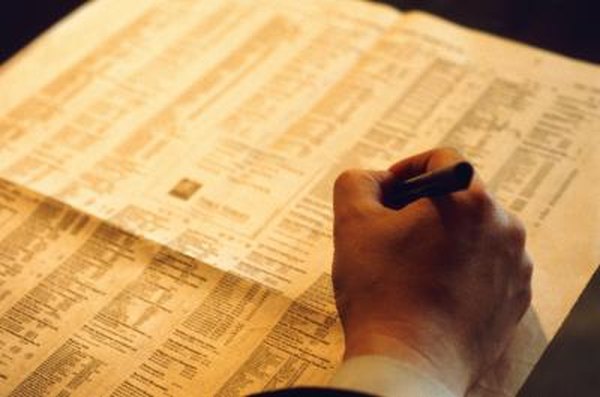Does EPS Increase After a Reverse Stock Split?
Stock splits are significant events for a public corporation.
John Foxx/Stockbyte/Getty Images
In a conventional stock split, the number of outstanding shares will increase. However, in a reverse stock split the number of shares declines. All per-share profitability measures, such as earnings per share or EPS, also change after stock splits. Understanding how stock splits works will help you make sense of key financial figures.
Stock Splits
In a conventional stock split, each existing share of stock is replaced with a greater number of new shares. Assume you own 1,000 shares in a corporation and the stock undergoes a 5-to-1 stock split. Once the split is finalized, your original 1,000 shares cease to exist and you instead have 5,000 new shares. In a reverse stock split, several old shares merge into a single share. If the firm in our example had instead announced a 5-to-1 reverse split, your 1,000 shares would have turned into 200 new shares.
EPS
EPS equals net earnings of the corporation divided by the number of shares outstanding. Because there are fewer shares after a reverse stock split but the earnings remain unchanged, the earnings per share increase. Assume the company earned $1 million and and has 1 million shares outstanding. EPS equals $1 million / 1 million, or $1. After 5-to-1 reverse split, the share count declines to 200,000. The new EPS is $5 ($1 million / 200,000). Hence, after a 5-to-1 reverse split, the EPS grows fivefold. In all reverse splits, the EPS multiplies by the split ratio.
Stock Price
The stock price advances after a reverse split, and it declines after a regular split. As a result, the net value of your stock holdings remains unchanged. If, for example, the stock in our example was trading at $10 before the 5-to-1 reverse split, the new shares should begin to trade at $50. This is because five old shares represent the exact same ownership stake in the corporation as one new share, and therefore they should be worth the same. This adjustment in price is immediate and it occurs as a result of supply and demand in the market.
Dividends
Companies share their profits with shareholders by paying them cash dividends. After a reverse stock split, dividends per stock also advance by the split ratio, provided that the firm's dividend policy remains unchanged. If the firm had set aside $500,000 for dividend payments and had 1 million shares, each share would be paid a 50-cent dividend. After a 5-to-1 reverse split, the share count declines to 200,000. If the firm's profitability and total dividend outlay of $500,000 remains unchanged, each share will now be paid $2.50 ($500,000 / 200,000) -- five times the prior amount.
References
Resources
Writer Bio
Hunkar Ozyasar is the former high-yield bond strategist for Deutsche Bank. He has been quoted in publications including "Financial Times" and the "Wall Street Journal." His book, "When Time Management Fails," is published in 12 countries while Ozyasar’s finance articles are featured on Nikkei, Japan’s premier financial news service. He holds a Master of Business Administration from Kellogg Graduate School.

